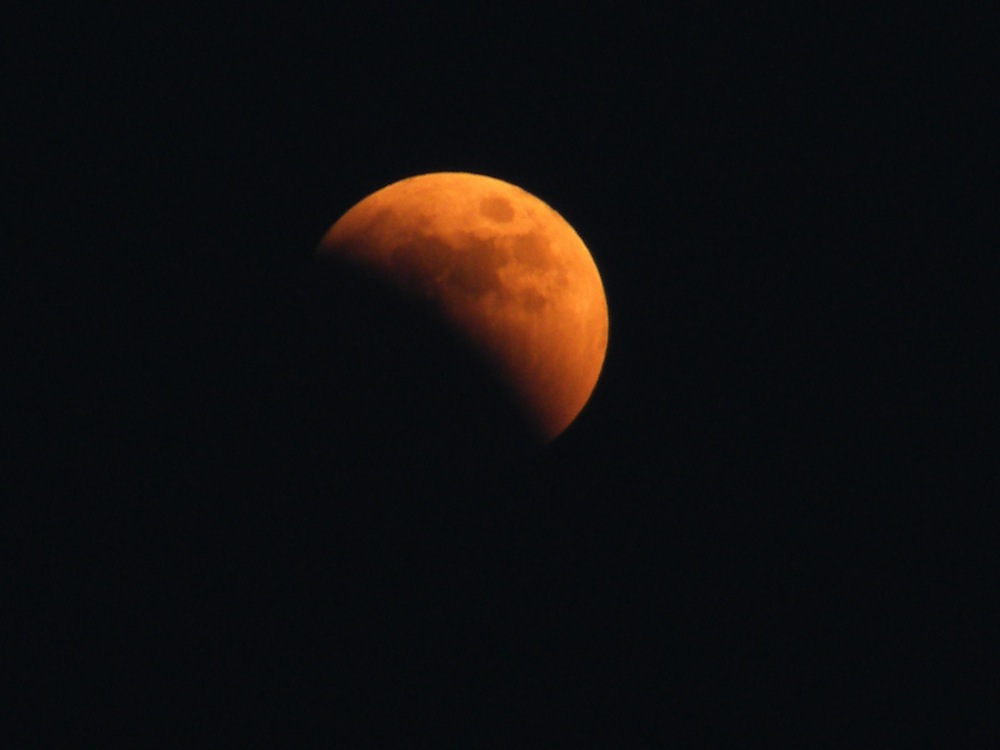Bad Moon Rising? Preacher Ties Blood Moons to Biblical Prophecies

Since the dawn of time, people have linked astronomical phenomena to events that occur on Earth.
From ancient comets that allegedly foretold of natural disasters to a 2011 "supermoon" that was suspected (at least by one astrologer) of causing storms and volcanoes that never quite appeared, we humans are a superstitious lot when it comes to celestial happenings.
Now, a popular televangelist from San Antonio named John Hagee has stated that the four lunar eclipses scheduled to begin this month — also known as "blood moons" — are a sign that biblical prophecies are about to come true, as detailed in his book, "Four Blood Moons: Something Is About to Change" (Worthy Publishing, 2013). [10 Failed Doomsday Predictions]
The lunar eclipse that will occur early tomorrow (April 15) is the first of four consecutive eclipses that Hagee claims are a "world-shaking event," according to the New York Daily News.
Astronomers refer to a series of eclipses such as this as a tetrad. While a tetrad isn't a common occurrence, they have happened in the recent past. The last such series happened in 2003 and 2004, and seven more will occur this century.
But the fact that tetrads and lunar eclipses are natural occurrences doesn't faze Hagee, who has pronounced it significant that each blood moon is happening on a significant religious holiday.
The April 15 eclipse will happen during Passover, the Jewish holiday commemorating the emancipation of the Israelites from slavery in ancient Egypt. Subsequent blood moons will occur during the Feast of the Tabernacles later this year, Passover in 2015, and the Feast of the Tabernacles in 2015.
Get the world’s most fascinating discoveries delivered straight to your inbox.
"Just as in biblical times, God is controlling the sun, the moon and the stars to send our generation a signal that something big is about to happen. The question is: Are we watching and listening to His message?" Hagee writes in his book, as quoted in the Daily News.
Hagee is far from the first to make a tenuous link between natural events and biblical prophesies or religious myths. When comet Hale-Bopp appeared in 1997, rumors surfaced that an alien spacecraft was following the comet — covered up, of course, by NASA and the astronomical community.
Though the claim was refuted by astronomers, the rumors were publicized on Art Bell's paranormal radio talk show "Coast to Coast AM." These claims inspired a San Diego cult named Heaven's Gate to conclude that the world would end soon. The world did indeed end for 39 of the cult members, who committed suicide on March 26, 1997.
The end of the world was also scheduled for Dec. 21, 2012, according to the so-called Mayan prophecy, a misinterpretation of a calendar used by the ancient Maya people of Mesoamerica. Though the Maya made no such predictions, some modern individuals and groups claimed the civilization had foretold the end of days would begin on that date. It never, of course, happened.
Though Hagee's message about the tetrad of blood moons may seem like nothing more than one more pseudo-religious fantasy, he's no stranger to such controversies. In 2008, Hagee was criticized for blaming Hurricane Katrina on a New Orleans gay and lesbian rally.
"There was to be a homosexual parade there on the Monday that the Katrina came. And the promise of that parade was that it was going to reach a level of sexuality never demonstrated before in any of the other Gay Pride parades," Hagee said on NPR. "And I believe that the Hurricane Katrina was, in fact, the judgment of God against the city of New Orleans."
Follow Marc Lallanilla on Twitter and Google+. Follow us @livescience, Facebook & Google+. Original article on Live Science.



